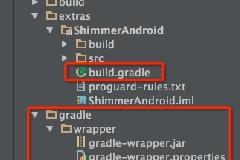由于国内Android市场众多渠道,为了统计每个渠道的下载及其它数据统计,就需要我们针对每个渠道单独打包,如果让你打几十个市场的包岂不烦死了,不过有了Gradle,这再也不是事了。
友盟多渠道打包
废话不多说,以友盟统计为例,在AndroidManifest.xml里面会有这么一段:
<meta-data
android:name="UMENG_CHANNEL"
android:value="Channel_ID" />里面的Channel_ID就是渠道标示。我们的目标就是在编译的时候这个值能够自动变化。
- 第一步 在AndroidManifest.xml里配置PlaceHolder
<meta-data
android:name="UMENG_CHANNEL"
android:value="${UMENG_CHANNEL_VALUE}" />- 第二步 在build.gradle设置productFlavors
android {
productFlavors {
xiaomi {
manifestPlaceholders = [UMENG_CHANNEL_VALUE: "xiaomi"]
}
_360 {
manifestPlaceholders = [UMENG_CHANNEL_VALUE: "_360"]
}
baidu {
manifestPlaceholders = [UMENG_CHANNEL_VALUE: "baidu"]
}
wandoujia {
manifestPlaceholders = [UMENG_CHANNEL_VALUE: "wandoujia"]
}
}
}或者批量修改
android {
productFlavors {
xiaomi {}
_360 {}
baidu {}
wandoujia {}
}
productFlavors.all {
flavor -> flavor.manifestPlaceholders = [UMENG_CHANNEL_VALUE: name]
}
}很简单清晰有没有?直接执行 ./gradlew assembleRelease , 然后就可以静静的喝杯咖啡等待打包完成吧。
assemble结合Build Variants来创建task
上一篇博客介绍了 assemble 这个命令,会结合 Build Type 创建自己的task,如:
- ./gradlew assembleDebug
- ./gradlew assembleRelease
除此之外 assemble 还能和 Product Flavor 结合创建新的任务,其实 assemble 是和 Build Variants 一起结合使用的,而 Build Variants = Build Type + Product Flavor , 举个例子大家就明白了:
如果我们想打包wandoujia渠道的release版本,执行如下命令就好了:
- ./gradlew assembleWandoujiaRelease
如果我们只打wandoujia渠道版本,则:
- ./gradlew assembleWandoujia
此命令会生成wandoujia渠道的Release和Debug版本
同理我想打全部Release版本:
- ./gradlew assembleRelease
这条命令会把Product Flavor下的所有渠道的Release版本都打出来。
总之,assemble 命令创建task有如下用法:
- **assemble**: 允许直接构建一个Variant版本,例如assembleFlavor1Debug。
- **assemble**: 允许构建指定Build Type的所有APK,例如assembleDebug将会构建Flavor1Debug和Flavor2Debug两个Variant版本。
- **assemble**: 允许构建指定flavor的所有APK,例如assembleFlavor1将会构建Flavor1Debug和Flavor1Release两个Variant版本。
完整的gradle脚本
最后福利大放送,来一份我在项目中使用的完整的gradle文件配置:
apply plugin: 'com.android.application'
def releaseTime() {
return new Date().format("yyyy-MM-dd", TimeZone.getTimeZone("UTC"))
}
android {
compileSdkVersion 21
buildToolsVersion '21.1.2'
defaultConfig {
applicationId "com.boohee.*"
minSdkVersion 14
targetSdkVersion 21
versionCode 1
versionName "1.0"
// dex突破65535的限制
multiDexEnabled true
// 默认是umeng的渠道
manifestPlaceholders = [UMENG_CHANNEL_VALUE: "umeng"]
}
lintOptions {
abortOnError false
}
signingConfigs {
debug {
// No debug config
}
release {
storeFile file("../yourapp.keystore")
storePassword "your password"
keyAlias "your alias"
keyPassword "your password"
}
}
buildTypes {
debug {
// 显示Log
buildConfigField "boolean", "LOG_DEBUG", "true"
versionNameSuffix "-debug"
minifyEnabled false
zipAlignEnabled false
shrinkResources false
signingConfig signingConfigs.debug
}
release {
// 不显示Log
buildConfigField "boolean", "LOG_DEBUG", "false"
minifyEnabled true
zipAlignEnabled true
// 移除无用的resource文件
shrinkResources true
proguardFiles getDefaultProguardFile('proguard-android.txt'), 'proguard-rules.pro'
signingConfig signingConfigs.release
applicationVariants.all { variant ->
variant.outputs.each { output ->
def outputFile = output.outputFile
if (outputFile != null && outputFile.name.endsWith('.apk')) {
// 输出apk名称为boohee_v1.0_2015-01-15_wandoujia.apk
def fileName = "boohee_v${defaultConfig.versionName}_${releaseTime()}_${variant.productFlavors[0].name}.apk"
output.outputFile = new File(outputFile.parent, fileName)
}
}
}
}
}
// 友盟多渠道打包
productFlavors {
wandoujia {}
_360 {}
baidu {}
xiaomi {}
tencent {}
taobao {}
...
}
productFlavors.all { flavor ->
flavor.manifestPlaceholders = [UMENG_CHANNEL_VALUE: name]
}
}
dependencies {
compile fileTree(dir: 'libs', include: ['*.jar'])
compile 'com.android.support:support-v4:21.0.3'
compile 'com.jakewharton:butterknife:6.0.0'
...
}大家有问题或疑问、建议欢迎博客留言,Android Studio的教程暂且到这里结束了,相信大家基本的都已会使用了,还有其他技巧与操作靠大家自己摸索了,之后有时间也会在博客上整理下一些Tips之类的,欢迎大家关注。






最新评论